You know my mailbox has been flooded with queries about estimating brickwork and especially questions like “how many bricks to build a house” or “how many bricks does it take to build a house” or “how many bricks to I need”. So, in my today’s master-blog, I’ve tried to cover all the aspects and answer such estimation questions:
Well whether you’re looking to build a house of 1000 square feet, 1200 sq. ft. or 2400 sq. ft house; the calculation for brick size is similar. Depending on whether you’re building a half-brick thick wall or a one-brick thick wall; we can use a thumb rule to estimate bricks. (Please check below a description about half and one-brick wall)
For a single-layer wall, you can get the number of bricks required by multiplying the area of the wall with 60 to get the number of bricks you need. Just multiply the length and width of wall to get area and then multiply that with 60 and don’t forget to add 10% wastage.
This thumb-rule, however assumes that you’re using ‘standard’ brick and mortar sizes.
Let’s now see further the steps to estimate number of bricks in detail:
Also Read: Types of bricks – Classification & Uses (Don’t Miss)
Table of Contents
- Brick by Brick: The Simple Math of Building Your Dream House
- What are Bricks?
- Types of Bricks
- Why are Bricks Best for Building Houses?
- Factors to Consider When Determining How Many Tons of Brick to Use to Build a House
- How to Use the Brick Calculator
- Rule of Thumb Used in Calculating the Number of Bricks Needed to Build a House
- How to Calculate the Bricks You Need for the Wall
- Types of Brick Walls
- How Many Bricks Do You Need Per Square Foot Wall?
- How to Build a House With Bricks and Cement
- Benefits of Using Bricks
- Cons of Using Bricks
- Typical values for number of bricks required for a house
- Common standard sizes of bricks used in a house
- Final Thoughts
Brick by Brick: The Simple Math of Building Your Dream House
Building a house with bricks is a construction practice that has been around for centuries. This is because bricks are reliable, durable, and relatively inexpensive materials used in houses worldwide.
However, before you decide on using brick to build your house, understand how many tons of brick you will need for the job. This article will look at what kind of bricks are available on the market, discuss factors that influence how many bricks are required and provide an easy way to calculate your project’s needs with the Brick Calculator tool.
Also Read: Types of Brick finishes – Brick Wall Texture – Definecivil
What are Bricks?
Bricks are small blocks usually made from clay or concrete that can be arranged into walls and other structures with mortar joints. They come in various sizes ranging from 2 ¼” x 3 5/8″ up to 8″ x 16″.
Depending on where they’re manufactured, some bricks may include additives like sand or fly ash, making them stronger than others. Today’s most common bricks are fired clay masonry units (CMU) and concrete block units (CBU) that use cement instead of clay as their main ingredient.
Types of Bricks
Various types of bricks vary based on material composition:
Clay bricks have been around since ancient times—their durability and low cost make them popular even now! Clay bricks typically require no additional treatments after firing but retain their strength well when appropriately dried due to their high silica content.
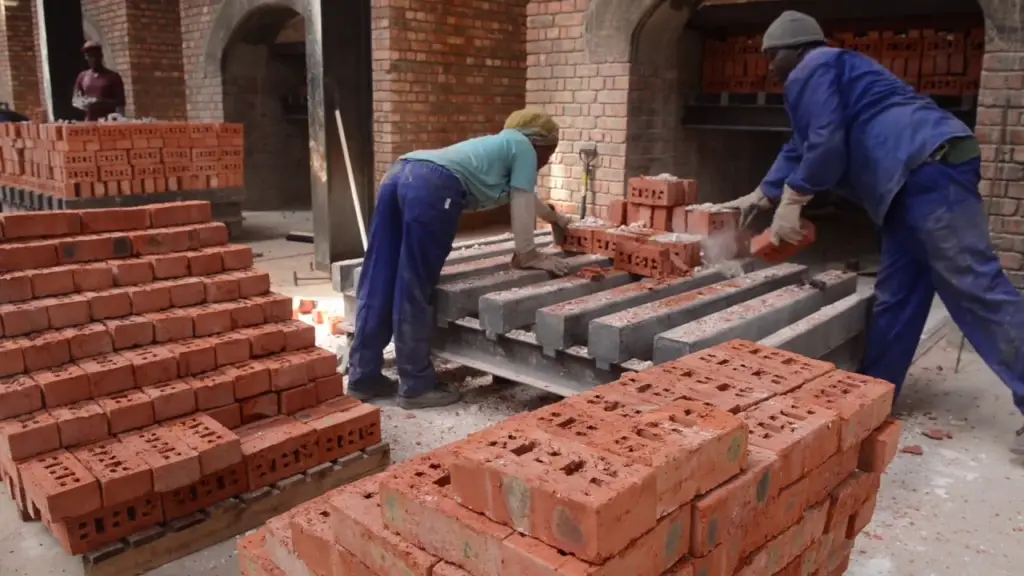
Concrete bricks contain Portland cement, making them cheaper than other types while also providing excellent insulation properties!
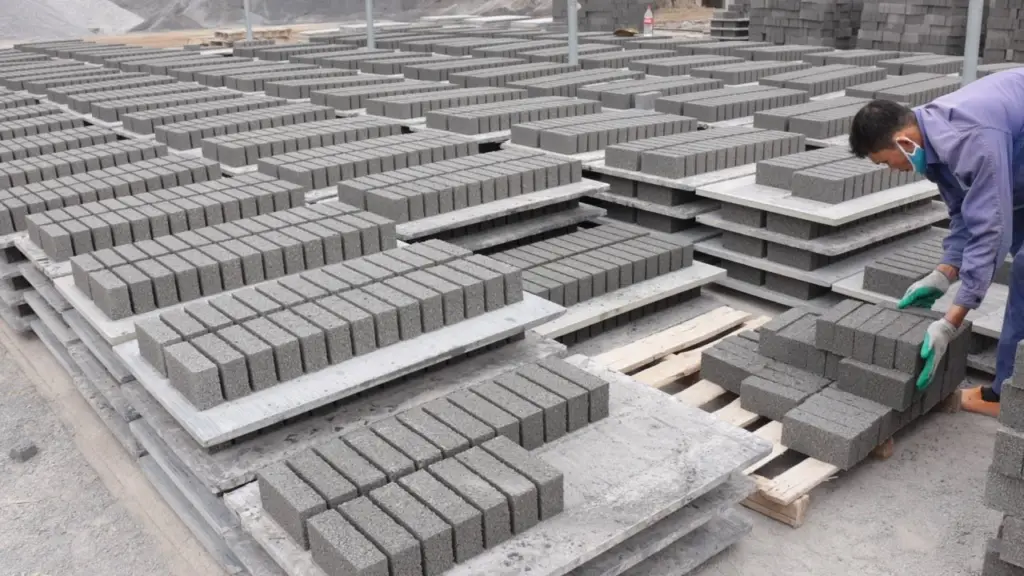
Engineering bricks possess greater strength than standard CMUs due to their air voids filled with polystyrene, creating load-bearing capabilities without added weight expense—ideal for larger buildings such as bridges or dams.

Why are Bricks Best for Building Houses?
Bricks offer several advantages over traditional building materials such as wood or steel; bricks are fireproof, durable, and energy efficient because they retain heat in cold climates and keep cool on hot summer days.
Also Read: Properties of Bricks – Compressive Strength – Efflorescence
They also provide an aesthetic charm that can be appreciated by homeowners looking to build a dream house with character. Furthermore, compared with block walls which require concrete footings—brick structures only need minimal foundation work and reinforcement, making them easier and faster to construct without sacrificing quality.

Factors to Consider When Determining How Many Tons of Brick to Use to Build a House
Before choosing how much brick you need for your home construction project, there are a few factors to consider, and they include the following:
Cost- Budget also plays a role in knowing how many tons of bricks you will need for your home building project since different types of brick can cost different amounts. Additionally, any special requests related to design or architecture that might require specialty shapes or sizes, may entail higher expenses. You must also consider the brick installation cost, especially if you are hiring professionals.
Size of the House – The house’s size is essential when determining how much brick will be needed. Generally speaking, wide and taller houses require more materials—but ths also depends on other factors like wall thickness and mortar joint width.
The Thickness of the Mortar Joint – Mortar joints are the spaces between two bricks that help support and bond them. They come in various thicknesses from 1/8″-1/4″, with thicker ones essential for heavier or taller walls needing additional stability and strength.
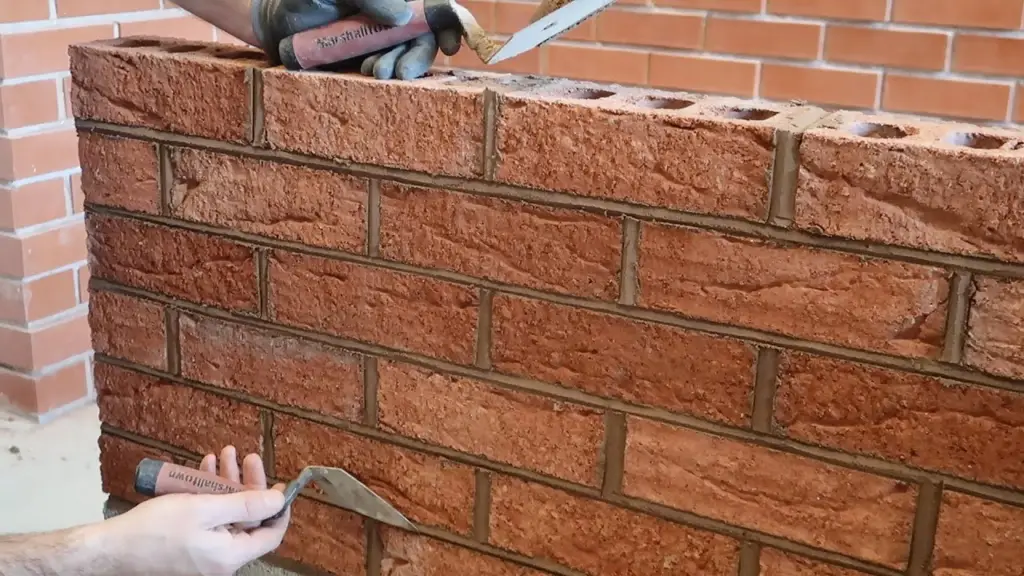
Square Footage – Knowing your overall square footage can help you estimate your needed bricks based on industry-standard brick amounts per sq ft (50-60 sq ft). This number varies depending on brick type and thickness but provides a good starting point when calculating estimates.
Wall Thickness: Different walls require different depths. For instance, interior masonry may only go one layer deep, whereas exterior facing might use two layers. One course is 4 inches thick, providing increased thermal insulation properties and keeping homes warm during winter months without extra energy costs.
Brick Size and Thickness: Depending on location, availability, and budget, there are many options available regarding type and size. You must also note that the bricks have varying weights. Some areas restrict certain types due to environmental regulations, while others favor concrete blocks over units due to their fireproof qualities.
Percentage of the House Using Bricks: Not all buildings are entirely made of brick, so understanding what percentage will be used helps adjust material calculations accordingly without overestimating.
Also Read: How much does brick weigh? Average brick weight
How to Use the Brick Calculator
If you’re wondering how many bricks you need for your house, then our easy-to-use calculator can help you determine precisely what your project requires.
- Input the brick’s measurements
- Enter your mortar joint thickness
- Input the length and height of the wall (total area)
- Select the type of wall you want to build. It can be half-brick or one-brick.
- Remember to input the wastage percentage to get the number of bricks needed.
When using a brick calculator, you’ll get two answers, of which the first gives you the exact number of bricks needed, and the second factors in wastage.
Rule of Thumb Used in Calculating the Number of Bricks Needed to Build a House
Although using a calculator provides accurate results tailored towards each application, another helpful way to estimate amounts is using a rule of thumb.
For instance, when calculating the number of bricks required for a half-brick or one-brick wall, you will need to multiply the length of the wall by the height to get the total area. Then multiply the area by 4.5 to get the exact number of bricks needed. Then you can add 10% to account for waste.

Also Read: Test of Bricks – 7+ Quality parameters for bricks at site
How to Calculate the Bricks You Need for the Wall
Use this step-by-step process when determining the number of bricks needed for the wall.
- First, you’ll need to calculate the area you will cover. So, measure the length and width of it in feet and also that of the bricks.
- Determine the size of the mortar joint
- Decide which brick size you’re using
- Calculate the number of brick rows required by dividing those two measurements.
- Multiply this result by 2 (for both sides)
- Add one more row to account for any overlap at corners or doorways.
- Finally, multiply that number again by the height of your wall to get your total amount.
Types of Brick Walls
There are three types of brick walls, and they include:
Half-brick Thick Walls
When building a half-brick thick wall, you need twice as many bricks than with a single-layer wall (or 1 ¼”). This is because the bricks are laid horizontally, and the stretcher side is exposed. This type of wall is not ideal for load-bearing since it’s freestanding and has limited structural support.
Also Read: Standard Brick Size – Brick Dimensions that you MUST Know
Therefore, when building this type of wall, take note of the height of the wall, as it should not exceed 1.64 feet, and place brick piers strategically to offer extra support.
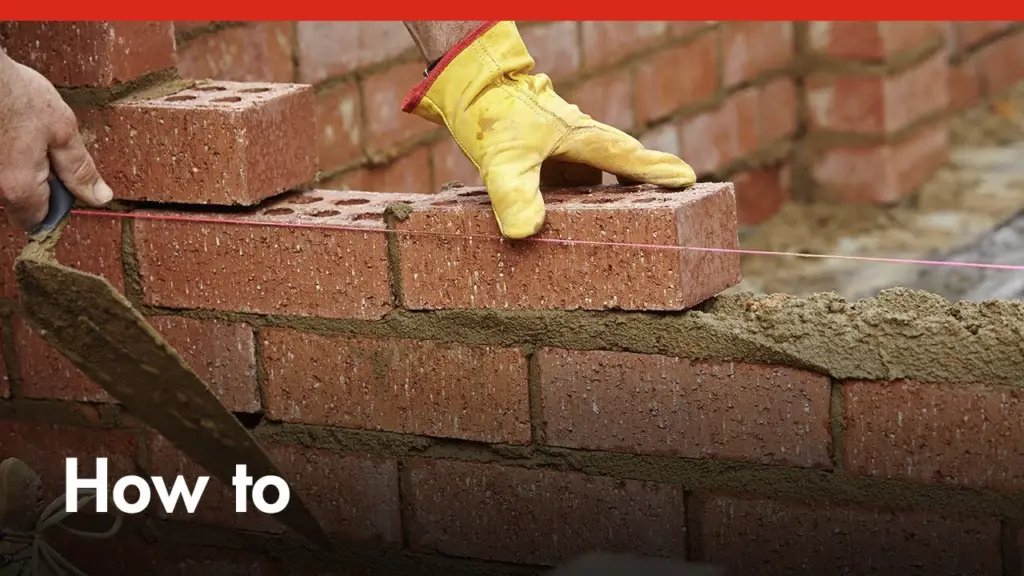
One-brick Thick Walls
The one-brick-thick wall consists of two layers: a stretcher and a header course. The stretcher layer is laid with the long edges exposed, while the header course is laid with the short side of the brick exposed. The two layers enhance the wall’s structural integrity.

The wall is supposed to be at least 1.94 feet high. Using standard bricks, you’ll require about 120 bricks per meter squared.
Also Read: Fly Ash Bricks – Advantages – Disadvantages – Properties
Brick Piers
In addition to standard exterior walls, you’ll need to use brick piers in other areas like chimneys and fireplaces.
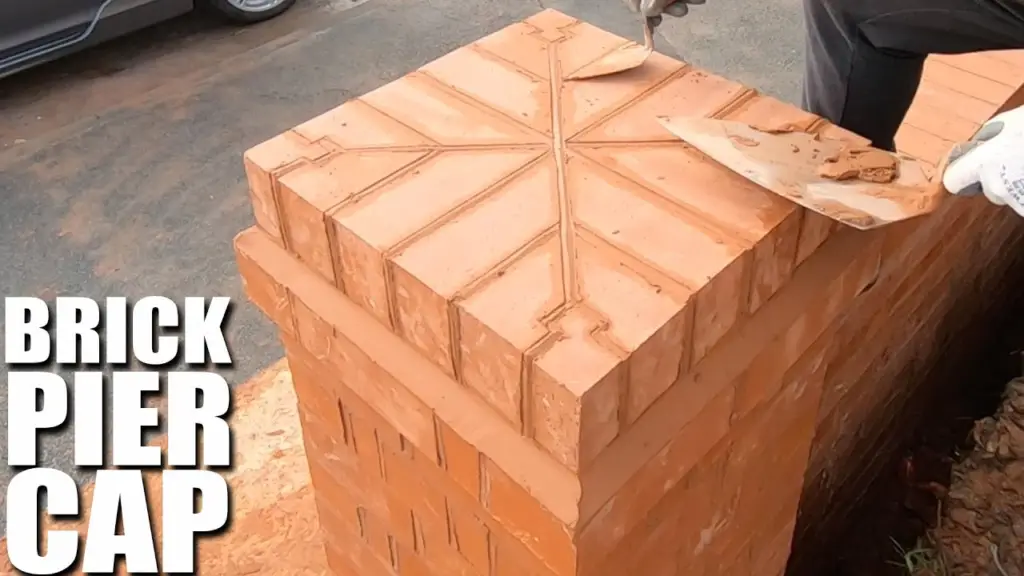
How Many Bricks Do You Need Per Square Foot Wall?
When building a brick wall, many like to determine the number of bricks needed per square foot. When the bricks are 7.5″*3.5″, 5 bricks are sufficient per square foot. And the same number applies when the bricks are 9.5″*2.75″. It’s important to note that the larger the bricks, the less you need to cover a square foot.
Also Read: Different Shape Bricks (13 Shape Types I bet unknown to
How to Build a House With Bricks and Cement
Building a house with bricks requires careful planning before beginning construction so that everything is done correctly from start to finish without unnecessary delays or costs.
You start by laying foundation materials like cement slabs before carefully placing each block in position according to desired design layout.
Pay attention to mortar joints between them to ensure no weak spots throughout the perimeter.
You must also periodically check levels against each other during the process and account for expansion contraction over time.
Once completed, apply a sealant over the surface to help protect it from weather elements, including rain, storms, and UV rays.
Benefits of Using Bricks
- Inexpensive
- Fireproofing qualities
- They are energy efficient as they keep the heat out, thus keeping your house cool.
- Sound-dampening insulation properties
- Bricks are made of clay and shale, which makes them natural and readily available. Thus, they are eco-friendly, can be recycled, and do not leach harmful chemicals into the environment.
- They resist mold and rot as they cope with high humidity levels.
- Minimal maintenance requirements after installation ensure a long lifespan
- Strength and durability are much higher than wood and steel alternatives available today.
- They offer homeowners peace of mind, knowing their investment lasts years to come regardless of external threats while protecting occupants.
Cons of Using Bricks
- Although there are several advantages to using bricks, they have some disadvantages. They include the following:
- They can be challenging to remove in case of a remodeling job.
- They also require more mortar and cement than other building materials, which means additional expenses incurred when constructing/repairing projects with them.
- Their weight requires special foundations capable of handling increased loads imposed upon these sections due to this extra mass which should all be considered beforehand.
- Painting brick walls is expensive and challenging. For instance, painting a 2,500-square-foot house would cost you approximately $7,000, while a similar vinyl wall would be $3,000.
Limited color choices include gray, red, and yellow bricks.
Typical values for number of bricks required for a house
| 800 | 25,000 |
| 1,000 | 31,250 |
| 1,200 | 37,500 |
| 1,500 | 46,875 |
| 2,000 | 62,500 |
Please note that this is only an estimate, the actual number of bricks required may vary depending on the design, layout and other factors. This table should be used as a rough guide for calculating the number of bricks required for a standard size house.
Also read: Flemish Bond and English Bond – Differences & Features
Common standard sizes of bricks used in a house
| Brick Size | Width (mm) | Height (mm) | Length (mm) | Width (in) | Height (in) | Length (in) |
| Imperial | 215 | 102.5 | 102.5 | 8.46 | 4.03 | 4.03 |
| Metric | 215 | 100 | 76 | 8.46 | 3.94 | 2.99 |
| Utility | 215 | 102.5 | 76 | 8.46 | 4.03 | 2.99 |
Please note that that this table is only meant as a reference, and the dimensions may vary slightly depending on the manufacturer or location.
Also Read: Pointing in Brickwork – Types – Keyed Pointing – Tuck Pointing
Final Thoughts
Brick houses are a gem as they are beautiful and inexpensive to build. If you plan to build a brick house, you need to determine how many tons of bricks you’ll need. This will help you better budget for the house and decide the type of bricks you need.
Further read: Quantity of Bricks in a wall (STEP BY STEP Approach)



















